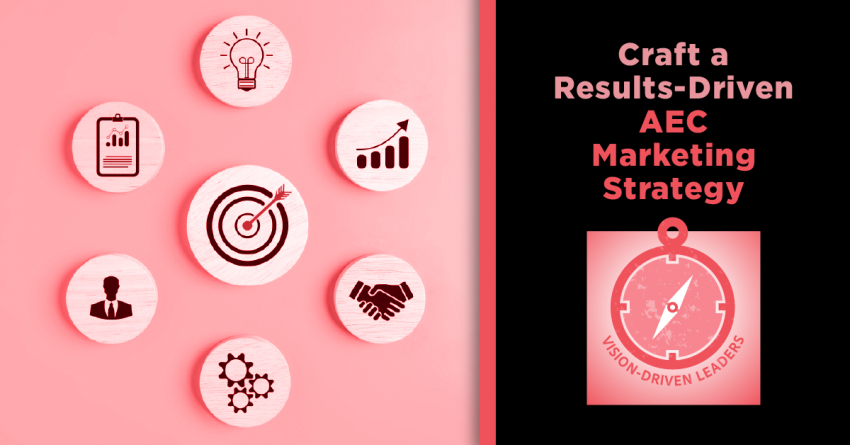Mastering the Blueprint: A 10-Step Guide to Crafting a Results-Driven Marketing Strategy in the AEC Industry
Marketing in the architecture, engineering, and construction (AEC) industry is a unique challenge that requires a strategic approach tailored to the industry's specific needs and nuances. To successfully navigate this competitive landscape, AEC firms must regularly conduct marketing strategy sessions. These sessions help align your marketing efforts with your business goals and ensure that your message reaches the right audience. In this article, we will outline ten crucial steps for conducting a marketing strategy session in the AEC industry.
Step 1—Set Clear Objectives:
Begin by setting clear and measurable marketing objectives. Understand what you aim to achieve through your marketing efforts, whether it's increasing brand awareness, generating leads, or enhancing client relationships. Your objectives should align with your firm's overall business goals.
Step 2—Identify Your Target Audience:
In the AEC industry, knowing your audience is paramount. Define your ideal clients, influencers and decision-makers within those organizations. Understand their pain points, needs, and preferences to create tailored marketing messages that resonate with them.
Step 3—Conduct a SWOT Analysis:
Conduct a SWOT (Strengths, Weaknesses, Opportunities, Threats) analysis of your firm's current marketing efforts. Identify what's working, what's not, and where opportunities lie. This analysis serves as a foundation for your marketing strategy.
Step 4—Analyze your Competitors:
Study your competitors to gain insights into their marketing strategies. Identify what sets your firm apart and how you can capitalize on your strengths. Understanding the competitive landscape helps you find your unique value proposition.
Step 5—Allocate a Budget:
Determine your marketing budget for the upcoming period. Allocate resources effectively to various marketing channels and initiatives, such as digital marketing, content creation, events, and public relations.
Step 6—Craft Key Messages:
Craft compelling and consistent messaging that communicates your firm's expertise, values, and unique selling points. Ensure that your messages resonate with your target audience and address their pain points.
Step 7—Choose Marketing Channels:
Select the most appropriate marketing channels to reach your audience. In the AEC industry, this may include your website, social media, email marketing, trade shows, industry publications, and more. Develop a multi-channel strategy that integrates these platforms.
Step 8—Plan Your Content:
Content is king in the AEC industry. Plan a content strategy that includes blog posts, whitepapers, case studies, and educational materials that showcase your expertise and provide value to your audience. Quality content establishes your firm as an industry authority.
Step 9—Outline a Marketing Calendar:
Develop a comprehensive marketing calendar that outlines all your planned activities, campaigns, and milestones. A calendar helps ensure consistency and keeps your marketing efforts on track.
Step 10—Track Your Metrics and Analytics:
Implement tools to measure the effectiveness of your marketing efforts. Track key performance indicators (KPIs) such as website traffic, lead generation, conversion rates, and ROI. Regularly review your analytics to make data-driven adjustments to your strategy.
Conducting a marketing strategy session in the AEC industry is essential for firms looking to thrive in a competitive environment. By following these ten steps, you can create a focused and results-driven marketing strategy that aligns with your business objectives and resonates with your target audience. Remember that marketing is an ongoing process, and continuous evaluation and adaptation are key to long-term success in the AEC industry.






